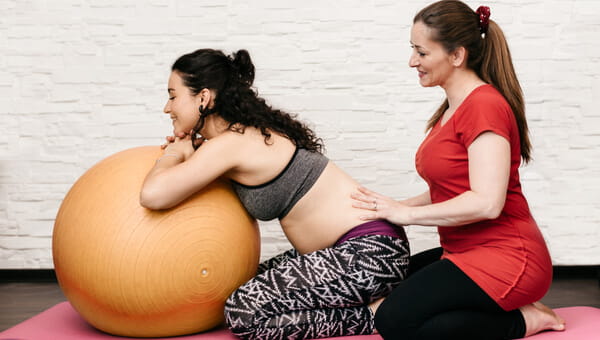Hopefully, you're over the worst of your fatigue and morning sickness. But even if you're not, regular exercise will help keep you feeling your best.
Some of the benefits of exercise during pregnancy include:
- Relief from constipation
- Pain relief, especially back pain
- Keeps your body strong as you prepare for delivery
- Helps promote a healthy amount of weight gain during pregnancy and weight loss after delivery
- Decreases the risk of health conditions like preeclampsia and gestational diabetes
Good workouts for the mom-to-be
The recommendation for most expectant moms is to aim for about 20 to 30 minutes of moderate exercise every day. Keep in mind that you don't have to do it all at once, and any kind of activity counts—even five minutes of packing lunches or making beds.
Walking
Walking is one activity you can do right up until (and including) delivery day—all you need is a good pair of sneakers.
Swimming
A dip in the pool can soothe many pregnancy ailments, including aches, pains, puffiness and nausea. The fact that it counts as exercise is just a bonus!
Yoga
Yoga promotes relaxation, flexibility and focus, which are all helpful during pregnancy and childbirth. Just make sure to avoid poses that involve lying flat on your back, standing still, backbends or headstands.
Biking
Riding a bike is a good low-impact aerobic workout. You may want to stick to a stationary bicycle, especially as your belly grows larger and the risk of falling increases.
Strength training
As long as the weights aren't too heavy, strength training is a great way to keep your muscles and bones strong and healthy.
Activities to avoid during pregnancy
Certain types of exercise aren't ideal during pregnancy, such as:
- Anything that involves altitude changes (that means climbing above about 6,000 feet or scuba diving)
- Activities that put you at risk for falling, especially as your belly gets larger and it becomes harder to balance
- Jumping and other sudden movements
- Deep squats and other movements that put a lot of pressure on your joints
- Sit-ups and other exercises that pull on the abdominal muscles
- Sports that pose a risk of injury to your belly area




